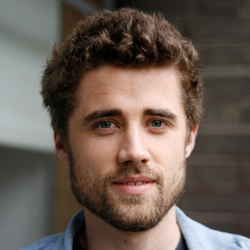
Dr Nicholas McGranahan
Sir Henry Dale Fellow and Cancer Genome Evolution Research Group Leader, UCL Cancer Institute, London, UK
Tumour evolution is far more important than it was previously realised. It is usually the reason why tumours are so hard to treat.
Traditionally, cancer development was seen as resulting in a relatively homogeneous tumour mass. In this scenario, cancer treatment would be relatively straightforward – if you can target one cancer cell you can target them all. By understanding tumour development as an evolutionary process, we can learn why treatments fail and, potentially, how to improve them.
Understanding the cancer environment
Our understanding of cancer is constantly evolving. One of the biggest areas we know more about now is the interplay between the cancer cell and the immune microenvironment. Ecology considers the ecosystem in which a species exists and evolves, the same principles apply to the cancer cell. To learn how the cancer cell has evolved and why it is evolving in a certain way we need to understand the environment in which it exists. The success of immunotherapies, such as immune checkpoint blockade, illustrate how the immune system can be harnessed to treat cancers.
By understanding tumour development as an evolutionary process, we can learn why treatments fail and, potentially, how to improve them.
Disease evolution guides therapies
Monitoring disease evolution could help guide the choice of therapy. If you have explored a primary tumour you can build up an accurate picture of all the mutations present in every cancer cell. These can be then used to help monitor the patient’s disease and look for signs of relapse. Evidence from the research setting suggests that circulating tumour DNA (ctDNA) can be used to track a tumour’s development and potentially detect changes early. I think that is really going to revolutionise the way we treat patients and understand resistance as well.
Introducing targeted therapies
The ultimate goal of our research is to understand patterns in cancer development such that we can predict the next step. Conceivably, one day we may be able to proactively treat the tumour in such a way that it could be led down an evolutionary dead end – rather than waiting for resistance to occur. With targeted therapies we already have a much deeper appreciation of the next resistance mechanism that is likely to occur and what treatment to give. But we want an even deeper knowledge of the playbook that the tumour might use and what we can do in advance of its next move.
Read the full article on the digital magazine of the European Society for Medical Oncology (ESMO), the ESMO Perspectives, https://perspectives.esmo.org


